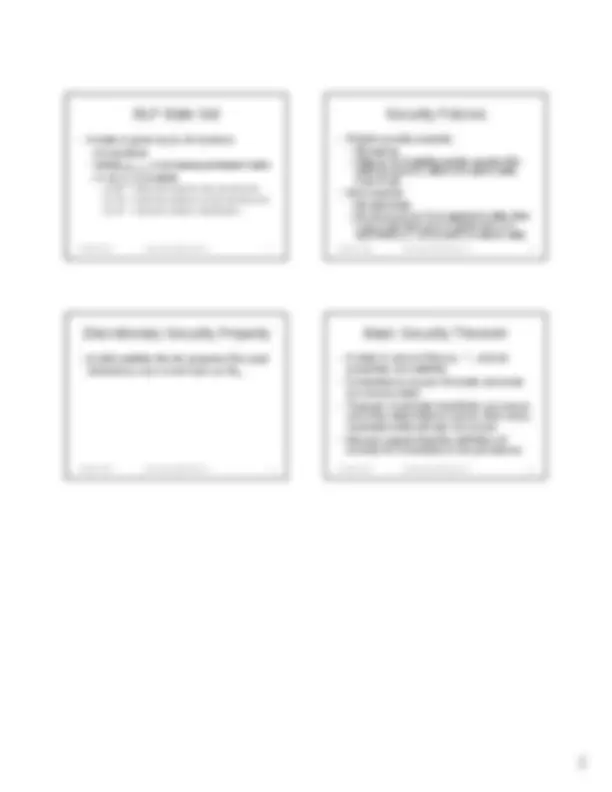



Study with the several resources on Docsity

Earn points by helping other students or get them with a premium plan


Prepare for your exams
Study with the several resources on Docsity

Earn points to download
Earn points by helping other students or get them with a premium plan
Community
Ask the community for help and clear up your study doubts
Discover the best universities in your country according to Docsity users
Free resources
Download our free guides on studying techniques, anxiety management strategies, and thesis advice from Docsity tutors
The 14th lecture notes from a university course named principles of information security, taught by prof. William winsborough at cs 5323 during the fall semester of 2007. The lecture covers topics such as security models, state machines, and the bell-lapadula model (blp). Students are expected to have read gollman chapter 8 before the guest lectures by prof. Hugh maynard about intrusion attacks and their detection.
Typology: Study notes
1 / 2

This page cannot be seen from the preview
Don't miss anything!


23 October 2007 Winsborough CS 5323 Lecture 14 2
23 October 2007 Winsborough CS 5323 Lecture 14 3
23 October 2007 Winsborough CS 5323 Lecture 14 4
23 October 2007 Winsborough CS 5323 Lecture 14 5
23 October 2007 Winsborough CS 5323 Lecture 14 6
23 October 2007 Winsborough CS 5323 Lecture 14 7
23 October 2007 Winsborough CS 5323 Lecture 14 8
23 October 2007 Winsborough CS 5323 Lecture 14 9
23 October 2007 Winsborough CS 5323 Lecture 14 10